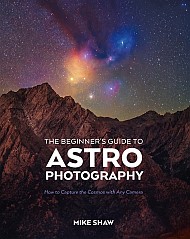Scientific American.com
New Glenn Rocket Launch Tests Jared Isaacman’s Commercial Space Vision for NASA
NASA’s presumptive next leader wants to outsource more of the space agency’s interplanetary science. The newly launched ESCAPADE mission to Mars offers a sanity check for those plans
Woolly Mammoth Unlocks Reveals the World’s Oldest RNA
RNA has been extracted from an ancient woolly mammoth, providing insight into its last moments on Earth
Stranded Chinese Astronauts Return to Earth, but Space Junk Threats Remain
The Shenzhou 20 spacecraft was too damaged to bring its crew home from China’s Tiangong space station. Those astronauts have now returned via the Shenzhou 21 craft, leaving its crew without a return ride until the nation sends a new spacecraft to the station
Raccoons Are Showing Early Signs of Domestication
City-dwelling raccoons seem to be evolving a shorter snout—a telltale feature of our pets and other domesticated animals
These are the World's Best Cities for Walking and Cycling
Data from 11,587 cities show that, rain or shine, some places are just better for bikes and pedestrians
We Had a Name for ‘Galaxies’ before We Knew They Existed
Centuries before other galaxies were known to exist, astronomers called them “spiral nebulas.” Today the defunct term still sparks confusion
A New Kind of Vaccine Offers Hope for Surviving Pancreatic Cancer
From COVID shots to cancer therapy, mRNA is changing medicine.
Blue Origin’s NASA Launch to Mars Is a Shot across the Bow for Elon Musk’s SpaceX
After delays, Jeff Bezos’s rocket company successfully launched a NASA mission to study Mars on Thursday
Are Turkeys at Risk of Bird Flu This Thanksgiving?
Nearly two million U.S. turkeys have died from bird flu in recent months. An agricultural economist explains what ongoing outbreaks could mean for Thanksgiving meals
Dog Skull Analysis Rewrites Evolution of Humanity’s Best Friend
A surprising diversity of dog shapes and sizes evolved long before the Victorians began making modern breeds
Jeffrey Epstein E-mails Reveal Ties to Prominent Scientists
A trove of e-mails from convicted sex offender Jeffrey Epstein was released by a congressional committee on Wednesday
‘Godfather of AI’ Breaks Major Science Research Record
The milestone makes machine-learning trailblazer Yoshua Bengio the most cited researcher on Google Scholar
What Causes Cancer? Maud Slye Thought She Had the Answer and a Way to Stop It
After studying mice in the 1910s, Maude Slye concluded that vulnerability to cancer was hereditary. She thought she had a solution to eliminate it, but she made some crucial mistakes
Chinese Expedition Reveals Unexplored Section of Mysterious Arctic Ocean Ridge
Oceanographers hope to find otherworldly ecosystems at hydrothermal vents on the Arctic seafloor
Scientists Might Soon Predict the Ocean’s Rogue Waves
An 18-year dataset from the North Sea reveals that rogue waves are not freak accidents but particular products of ordinary swells stacking up—an insight that could make prediction possible
CIA Kryptos Puzzle Creator Releases Final Clues
“Kryptos has not been solved,” said artist Jim Sanborn after releasing his parting clues to the “K4” section of his sculpture puzzle
Heat Waves Will Be Less Extreme because of Paris Climate Agreement
Ten years after the Paris climate agreement, the limited progress we’ve made in reducing global warming means that there will be less extreme heat in the future than there would be without the accord
The Epstein-Barr Virus May Cause Lupus
Early findings indicate that Epstein-Barr virus may also cause the autoimmune disease lupus
IEA Now Predicts Oil and Gas Demand Will Rise beyond 2030, Departing from Previous Forecasts
The International Energy Agency says weak climate action and energy security fears are effectively delaying peak fossil fuel consumption
Northern Lights Dazzle U.S. Skies after Powerful Solar Storm
A severe geomagnetic storm brought spectacular auroras to much of the U.S. on Tuesday night


